The Tomb Discoverer from Safed: "We Were Astonished to Find the Inscription 'Rabbi Joshua Ben Nun' on the Gravestone"
David Epsner sees it as his life mission to restore gravestones in the ancient cemetery of Safed. He has uncovered over ten thousand gravestones, each one with a story, each one with a character.
 (Photo: David Epsner)
(Photo: David Epsner)Anyone visiting the ancient cemetery in Safed today to pray at the grave of the Ari or Rabbi Joseph Karo will see an endless array of Jewish gravestones. However, just thirty years ago, there were only two known graves within the vast cemetery grounds — those of the Ari and Rabbi Joseph Karo. That was until Rabbi Shmuel Eliyahu, who was newly elected as the city’s chief rabbi, decided to undertake the restoration of the old cemetery as a major project of his life.
He assigned the task to David Epsner, who at the time worked for the city's religious council, and since then, he has worked to uncover more and more graves buried under significant layers of earth for centuries. "The neglect lasted 450 years, during which nobody tended or preserved the cemetery. This is why it takes so much time. It's a very long and complex job. Just to give an idea, the old cemetery covers over 100 dunams, with graves that are very densely packed. It's an enormous number of graves, which have been destroyed and neglected for many years," he says.
The process undergone by the cemetery narrates the story of old Safed. The immense damage aligns closely with events in the city, one of which was the great earthquake of 1837 that left thousands dead in the city and destroyed vast parts. But that's just a small part of why the cemetery was neglected. "Besides the earthquake, the cemetery is situated on a mountainside, and over the years, a considerable part of it was covered by earth and sand from rain erosion."
 This is a photo from the start of the restoration in 1993
This is a photo from the start of the restoration in 1993Where did the earth come from?
"It's somewhat surprising, but the soil came from burial caves in the cemetery. At some point, they began to bury in burial caves within the cemetery, and the soil extracted from the caves was dumped over the 15th and 16th-century graves. Furthermore, the mountainside location caused rainwater to wash more earth onto the graves over the years."
Epsner began his excavations near paths leading to the graves of the Ari and the Shulchan Aruch, where he discovered a startling truth. "We found that beneath the paths leading to the two famous graves were additional graves buried underneath. One must understand that thirty years ago, someone visiting the cemetery would simply run from the Ari's grave to the House of Joseph and exit. They didn't see more because it was all hidden underground. The burials of those centuries were layered with dirt upon dirt."
Joshua Ben Nun of Safed
To date, Epsner and various teams working with him have uncovered over ten thousand graves at the cemetery, revealing fascinating inscriptions. "We found tombstones from before the Ari's times and many with unfamiliar figures. One intriguing grave we found was of R' Joshua Ben Nun. Naturally, it struck us as odd at first because it couldn't possibly be that Joshua Ben Nun is buried in Safed, being from Moshe Rabbeinu’s times. So, we tried tracing the identity of R' Joshua Ben Nun and found that his name appeared extensively in Kabbalistic writings. It turns out that without him, the Ari's writings wouldn't exist. He was the first to transcribe and publish the Ari's works, taking them from the Ari's disciple, Rabbi Chaim Vital. Interestingly, initially, Rabbi Chaim Vital did not want the writings published. In one of his prefaces, he mentions hiring a hundred scribes and 600 papers to compile all the Ari's writings. He's a remarkable figure, a giant of his era, whose presence had faded along with his grave over the years. Now we've finally brought him back into awareness."
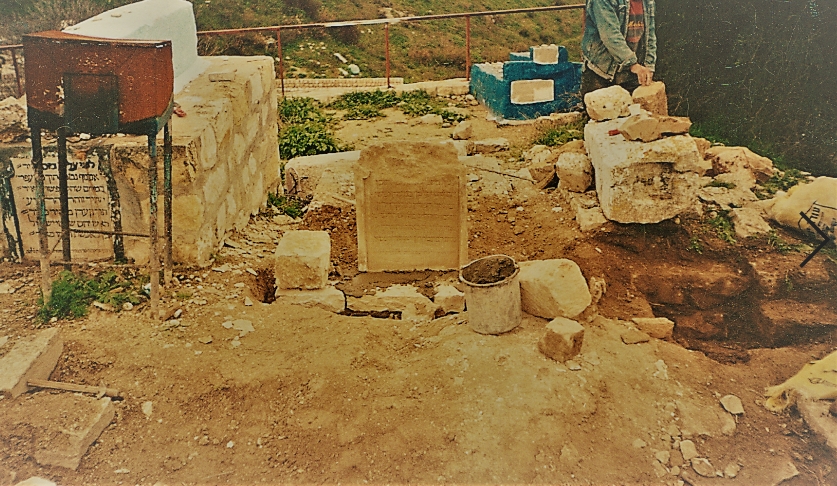 This photo shows the scene (from above) after restoration in 2007
This photo shows the scene (from above) after restoration in 2007What other surprising graves have you found in the cemetery?
"About a year ago, I uncovered a gravestone inscribed that R' Avraham Ben Ezra is buried here. I immediately became ecstatic. The Ibn Ezra! But then I realized it couldn't be that Ibn Ezra, as he lived over 900 years ago, and the cemetery dates back 500-600 years. So I started researching 'Ibn Ezra' and discovered he was a contemporary of the Maharib, one of Safed's sages. In fact, within the cemetery, we've found many sages of Safed, most unknown to the general public. The figures commonly known are those of the Shulchan Aruch, the Ari, R' Shimon Alcabetz, who wrote *Lecha Dodi*, the Ramak, and a few others. Many others are not known at all and appear in the halachic texts of that generation's sages. Figures like Rabbi Tzalon, the Maharil, and many others were significant Torah scholars of that era."
Listening to Epsner speak about uncovering the various graves, one can't help but feel his immense enthusiasm for the subject. He feels immersed in a world that was hidden from visitors’ eyes for many years. When I mention this observation, he gladly agrees. "It transports me back five hundred years. I pray to understand their lives and what transpired in those days. When I touch these gravestones, I find myself in their era. Walking among Rabbi Shimon Alcabetz, the Ari, the Ramak, and all the greats lifts you up. It gives you more strength to uncover more and more pieces of the Jewish people's history."
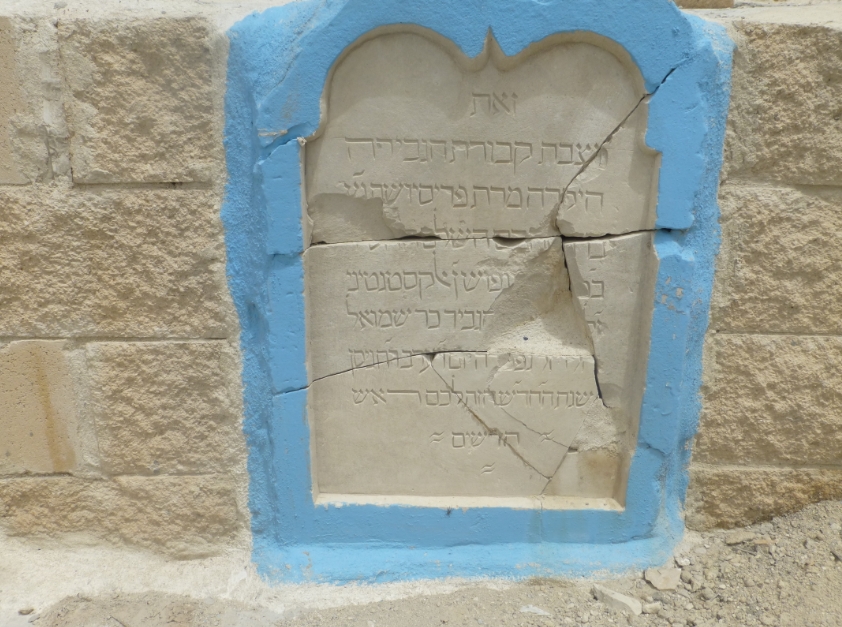
What is the feeling when discovering a new grave?
"It's an indescribable thrill. It's an incredible adrenaline shot. It's important for me to mention that out of the ten thousand gravestones we've uncovered, only very few can be identified. Fewer than 150 graves. This is perhaps the biggest frustration in the process. Most gravestones are made from limestone, so the inscriptions have eroded from rain over the years, and essentially, we find a grave but don't know who is buried there. Hence, when you manage to find a grave that can be identified, it's something special. It's a feeling that an outsider would not understand. When you begin to see the first letter, you can't wait until you reveal everything. Your heart leaps. You want to uncover it as quickly as possible, but you know you have to do it very delicately. It feels like what archaeologists experience when they discover antiquities."
The Burial Cave of the Narbonne Sages
If you ask Epsner about the most unique gravestone he’s uncovered, he won't point to one but to 11 found within a burial cave on the grounds. "Over the years, we found many burial caves previously unknown. Some had no graves, but where they did, we found stones from that period. There’s a whole cave I called 'The Cave of the Narbonne Sages.' We found 11 gravestones there, all containing bones brought from abroad to be buried in Safed. Most stones in the cave mention Narbonne, though we don't know exactly who's buried there as we lack documentation of the names. What we do know from one of the stones is that Rabbi Joseph Karo personally buried one of the deceased there. The family inscribed on the stone that the deceased was 'buried by the hands' of Rabbi Joseph Karo. Meaning that the Beit Yosef himself entered the cave and buried someone there in the year Rachats, two years after he ascended to the land. This might indicate the significance of the person buried there."
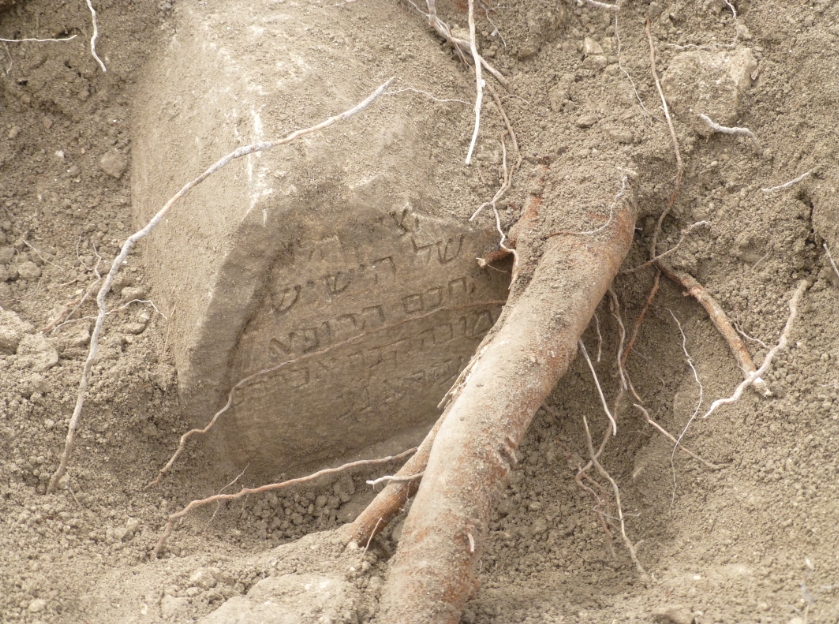
The 11 graves of the Narbonne sages from France are not the only graves of Jewish bones brought to Israel posthumously. It turns out it was a fairly well-known custom in those days. "The Alsheich wrote extensively on this phenomenon," Epsner recounts. "In the 15th and 16th centuries, many deceased abroad wished to be buried in Safed. This raised numerous halachic questions. The Mahari Birav, for instance, wrote entire responses on this subject. People would ask him questions like, 'Is it permissible to transfer the bones of a deceased who didn't give permission to bring his bones to Eretz Yisrael?' and he permitted it. The Alsheich writes there wasn’t a day without bones arriving from abroad."
"Out of the 100 Dunams of the Cemetery, We’ve Restored Only 15"
One of the most fascinating figures discovered among the graves is R' Joseph Falcon, who is titled 'the Scribe' on his gravestone. Initially, Epsner thought he might be a scribe of sacred texts, but it turned out R' Falcon had a much more significant role in shaping Safed's Torah world in those days. "We searched for him in the sages' books from that era and found him in the Ralbach’s book, even before Maran Beit Yosef. It turns out he was the registrar of the rabbinical court. Some years later, Beit Yosef wrote in the Shulchan Aruch that if a court ruling wasn't approved by the city's scribe, it had no validity. Suddenly, you realize that all the approvals passed through R' Falcon's hands, without whose agreement nothing would have been authoritative in those days."
He and a long list of other such central figures are entirely unknown to the public
"Absolutely. We've uncovered many halachic judges, registrars in the Safed rabbinical courts, and their names appear in the Shulchan Aruch. You encounter the name Rabbi Joshua Baruch, and you're unsure who he is until you start searching, and you see the Shulchan Aruch writes, 'And so signed the credible witness Rabbi Moses Baruch.' You look at all the names and realize you've discovered the ancient Safed court. The rabbinical court of Rabbi Joseph Karo and all those sages. That's what we found there, and it's inconceivable."
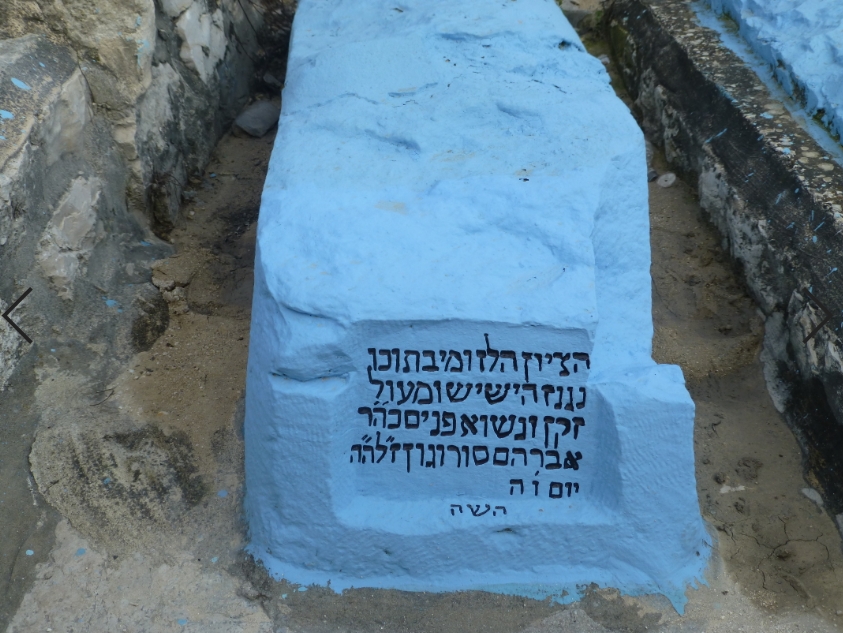
Apart from respecting the graves you're restoring, you’re also restoring honor to these figures
"Definitely. This feeling constantly accompanies me. In the end, these people were forgotten, and they are worthy of returning to public consciousness."
To this end, Epsner knows that merely locating the graves is not enough. The graves need to be presented to the public. Therefore, over the past year, since the last gravestone was unveiled, he’s worked on a book that tells the stories of the tombstones in the city's ancient cemetery. "Tombstones Tell Stories" is what he titled his book, encapsulating the idea behind them. Although he’s formally been working on the book recently, he began the groundwork many years ago. Thirty years of documentation appear in the book, with photos from before the work began when the entire area was covered in ashes, to today, with the unveiling of ten thousand graves.
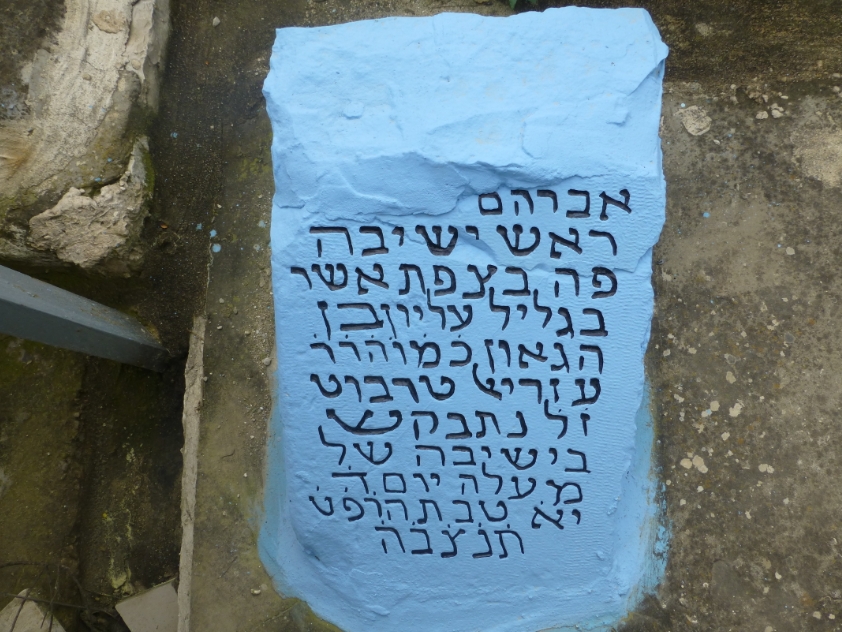
Though such a book sounds like an end-of-career project, it certainly is not. Epsner highlights that plenty of work awaits him in the future, and he hopes to continue this important task, which he rightly regards as a national project of the highest order. "We know many more rabbis and important figures are buried in Safed, yet we haven't found them all. Just to understand, out of the 100 dunams of the cemetery, we've restored only 15 dunams. There are still so many graves and genuine historical treasures waiting beneath the earth, just waiting to be uncovered and revealed. But it's not a 'request show.' We don't always find inscriptions on the gravestones, and even when we do, we can't predict whom we're going to find. I constantly pray that Hashem will help us locate more and more graves and the central figures that made Safed one of the most important cities for the Jewish people, a city of great Torah scholars."

